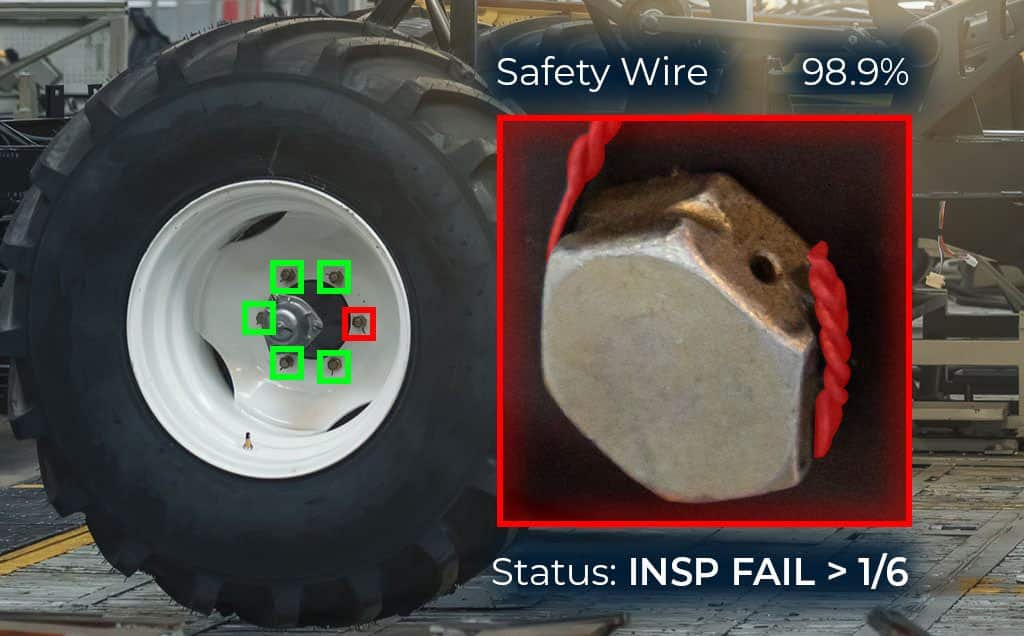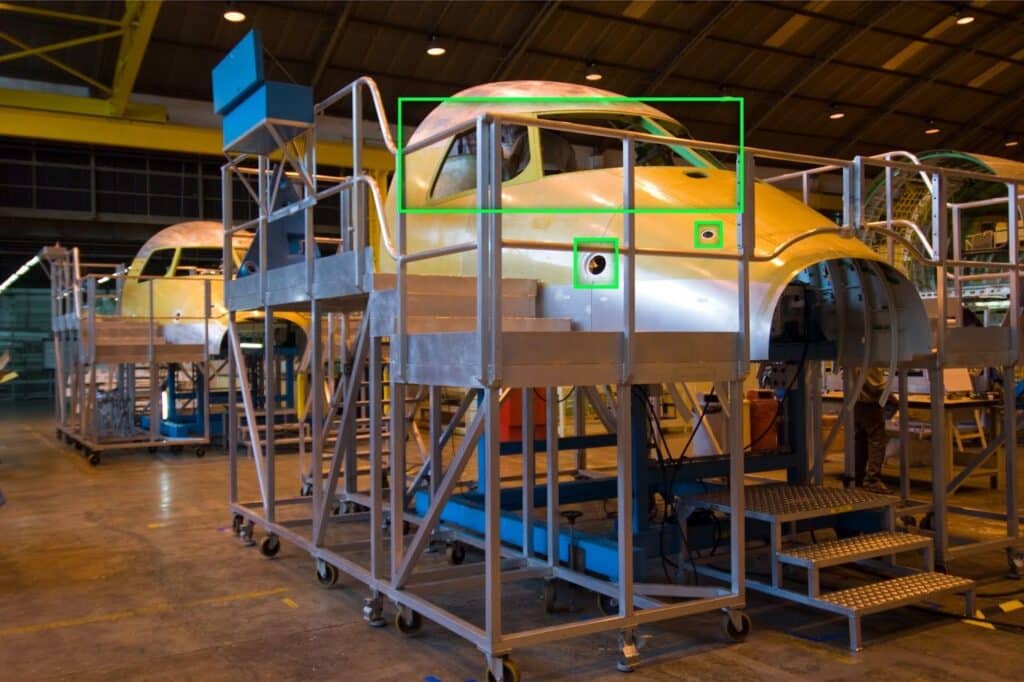Revolutionizing Quality Control in Transportation Manufacturing with AI-Powered Computer Vision

Matroid | April 29th, 2025

The transportation manufacturing industry is driven by stringent demands for perfection. Whether it’s a car, airplane, or ship, every nut and bolt must adhere to the highest quality standards. This goal of zero-defect manufacturing isn’t just about aesthetics or customer satisfaction—it’s a matter of safety, efficiency, and competitiveness.
The advent of AI-powered computer vision marks a new era in manufacturing. It offers unprecedented accuracy and efficiency in quality control. With these technologies, manufacturers now have the tools to meet—and even exceed—their exacting standards.
Why Zero-Defect Manufacturing is Essential
For transportation manufacturing, the stakes couldn’t be higher. Imagine a microscopic crack in an airplane engine part that goes undetected or a fault in a ship’s welding seam that could jeopardize its structural integrity. These aren’t trivial errors—they’re hazards that can lead to catastrophic failures, loss of life, and devastating financial and reputational consequences for manufacturers.
The demand for zero-defect manufacturing reflects the critical need for absolute reliability in transportation equipment. It’s not just about meeting customer expectations but ensuring compliance with strict safety regulations and reducing the long-term costs associated with recalls or repairs. However, achieving this level of perfection has traditionally been a daunting challenge, plagued by human limitations and inefficiencies in manual inspection processes.
The Role of AI-Driven Defect Detection
By combining advanced image processing with machine learning, computer vision systems can identify minute defects and irregularities before they become significant issues. With high-speed cameras and complex algorithms, computer vision can inspect millions of parts with a precision and speed that surpasses large teams of the most skilled human workers.
AI-driven defect detection systems, like Matroid’s no-code computer vision platform, combine flexibility with advanced functionality. By integrating seamlessly with any camera or imaging hardware, these systems simplify the implementation process and ensure broad applicability across different manufacturing environments.
Matroid’s software enables manufacturers to detect defects in real-time, regardless or complexity, allowing for swift identification of even minute irregularities. This adaptability is essential in industries such as automotive and aerospace, where evolving materials and production techniques demand systems that can keep pace with rapid innovation while maintaining stringent quality standards.
Beyond immediate defect detection, Matroid’s platform supports predictive analytics, enabling manufacturers to proactively enhance their operations. The software analyzes video and image data from production lines to identify patterns that point to emerging issues or inefficiencies.
For example, repeated detection of certain defects can signal the need for process adjustments or equipment maintenance. This predictive capability reduces production downtime and enhances product reliability and lifespan. With the additional advantage of digital traceability and real-time alerts, Matroid delivers a solution that safeguards quality and optimizes efficiency and compliance in modern manufacturing workflows.
Reducing Defects While Tackling Real-World Challenges
Although AI-powered computer vision has remarkable quality control capabilities, implementing these systems isn’t without its challenges. Training algorithms to detect defects requires high-quality datasets that reflect the complex conditions of real-life manufacturing. Defects vary not only in shape and size but also in how often they occur, making it essential to use diverse, extensive image libraries for training.
Fortunately, the no-code technology is emerging as a game-changer in overcoming these hurdles. It reduces reliance on manually labeled data by analyzing vast amounts of unlabeled images while achieving extraordinary defect-detection accuracy. This approach democratizes access to AI systems, making quality control more accessible, even to manufacturers with limited resources.
In aerospace manufacturing, for instance, the components in any aircraft must meet exacting specifications due to the extreme forces they endure. AI-driven imaging technologies can identify defects in materials, assembly irregularities, or coating imperfections, ensuring that every part is airworthy.
Similarly, the automotive industry is also leveraging AI to enhance production quality. Modern systems can verify that every weld, nut, and bolt is perfectly executed, eliminating errors that might lead to costly recalls. AI-powered imaging also addresses pressing challenges like identifying foreign objects or inconsistencies in reflective materials, streamlining processes in ways that were previously out of reach for most manufacturers.
In shipbuilding, where every weld and material must bear enormous stresses, delays caused by rework have traditionally been common. A computer vision system equipped with AI can analyze welding processes in real time, flagging errors immediately and virtually eliminating costly delays downstream.
Long-Term Benefits of AI in Transportation Manufacturing
The advantages of integrating AI into transportation manufacturing go well beyond the immediate quality improvements, though. Over time, these systems improve efficiency, safety, and cost-effectiveness.
Better Safety Standards
The primary goal in transportation manufacturing is ensuring public and operational safety. By catching defects early, manufacturers can prevent failures that might lead to accidents. AI-powered defect detection systems continuously work toward minimizing risks, delivering confidence in the performance of every part and assembly.
Simpler Regulatory Compliance
Transportation industries must constantly adapt to evolving regulations. Non-compliance can result in significant fines and damage to a company’s reputation. AI simplifies this complex process by enhancing documentation, traceability, and adherence to industry standards, helping manufacturers stay ahead of compliance demands.
Improved Cost Efficiency
While the initial investment in AI systems may seem substantial, the cost savings they generate over time more than justify the expense. Companies achieve significant efficiency gains by reducing material waste, avoiding expensive recalls, and minimizing lost production time. AI also supports predictive maintenance, allowing manufacturers to address potential issues and prevent downtime preemptively.
Support for Innovation
AI systems in transportation manufacturing enable manufacturers to push technological boundaries. Automated quality checks free up human resources to focus on innovation, ensuring companies remain competitive despite rapid advancements. The insights gathered through AI analysis also pave the way for improved designs and optimized processes.

A New Era in Transportation Manufacturing
AI-powered computer vision is revolutionizing how transportation manufacturers approach quality control. These systems elevate production ecosystems, prioritizing safety, efficiency, and innovation.
But, progress doesn’t come solely from technology. Successful integration requires collaboration between human expertise and artificial intelligence, ensuring that the insights provided by machines lead to informed, strategic decisions.
Explore how Matroid’s no-code computer vision platform can transform your quality control processes. With flexible integration, real-time defect detection, and predictive analytics, Matroid empowers your team to achieve unparalleled efficiency and precision. Contact us today to schedule a personalized demo and see how our solutions can elevate your manufacturing to the next level.
Building Custom Computer Vision Models with Matroid
Dive into the world of personalized computer vision models with Matroid's comprehensive guide – click to download today